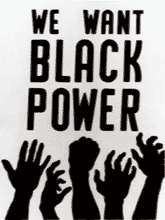Teaching Ideas
Illustrator: Associated Press

The stories on pages 36-38 can be used in a variety of ways with students of varying grade levels. Below are a few suggested discussion questions and activities.
Discussion Questions
What were some opportunities that were denied to black people because of their color?
What were some of the differences between black schools and white schools in the 1950s?
How do you think African Americans felt living under segregation?
Why do you think it took so many decades of organizing by civil rights activists to end Jim Crow laws?
What were some similarities and differences between Barbara Johns and Ruby Bridges?
What were some of the consequences for black people who tried to make things more fair for their children?
Debating Which Way Forward for Moton Students?
The students in Barbara Johns’ school originally demanded equal school facilities and resources, but the NAACP convinced them to be part of an attempt to integrate all the schools instead. This did not happen easily, and, in fact when integration was ordered by the court, whites set up private schools and the public high schools in Prince Edward County, Va., were shut down for five years.
Break your students in small groups. Have half the groups brainstorm the advantages and the other half the disadvantages of pursuing an integrationist approach versus an approach of demanding equal, yet separate, facilities. After they’ve prepared their arguments, hold a mock community meeting to debate the pros and cons of each approach.
Check out www.jimcrowhistory.org/ resources/pdf/Joan_Johns_Cobb.pdf for additional details about the actions of Barbara Johns, written by her sister.
Dramatizing the Bridges Story
Using additional print and video resources about Ruby Bridges [see pages 58-61] have students brainstorm different characters and dramatize the events of the story.
Writing Dialogue Poems
A dialogue poem is a conversation between two people. [For ideas on how to use dialogue poems see Rethinking Our Classrooms, Vol. 1, page 184.] Below are directions for three possible dialogue poems:
- Barbara Johns’ school, Moton High School, had lots of problems. It was not as good as the school that white children in Prince Edward County attended. Write a dialogue poem between Barbara Johns and a white student from the school across town. In your poem, mention some of the things that Moton High School students do not have but would like to have in their school (such as microscopes or a cafeteria).
- Write a conversation or a dialogue poem between Barbara Johns and an NAACP lawyer. Remember, they both wanted better schools for black children. But one difference, at least initially, was that Barbara Johns was trying to get more money to make Moton High School equal to the white schools, and the NAACP wanted to integrate the schools. You might choose to start your poem:
I am a black student.
I am a black lawyer. - In 1960, Ruby Bridges was the first black child to attend William Frantz Grade School, an all-white school in New Orleans, La. Ruby was six years old. Her father, Abon Bridges, did not want Ruby to be the first black student at the school. But Ruby’s mother, Lucille Bridges, insisted that Ruby must be the first student to integrate the school. Write a conversation that might have taken place between Ruby’s mom and dad as they tried to decide whether Ruby would be the first black student at William Frantz Grade School. (If you like, include Ruby in the conversation, but remember, in reality, Ruby’s parents told her what to do, and she did as she was told.)
Writing Interior Monologues
An interior monologue is when a person writes in the first person from the perspective of a particular character. Below are directions for two different interior monologues:
- When Ruby Bridges first went to William Frantz Grade School, she was the only student, because all of the white parents kept their children at home. Ruby’s teacher was a white woman. Imagine the journal entry that Ruby may have written at the end of her first day of school. Imagine how her teacher might respond. Write Ruby’s journal entry and her teacher’s response.
- Imagine what Barbara Johns might have been thinking as she planned her action at her school. What would she tell her classmates when she called them to the auditorium on April 23, 1951? Write an interior monologue including what Barbara thought about segregation and how she planned to act to make lives better for her younger siblings.
